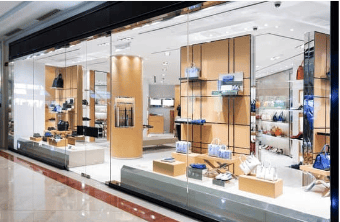The retail shelf position is always changing, which is driven by customer preferences and technology advancements. These changes play a large role in influencing consumer behavior and buying decisions. In this blog post, I will talk about some of the retail shelf transforming trends.
Consumer purchasing is moving toward personalization and customization, because of advancements in technology. Retailers can use data analytics and artificial intelligence to get the perceptions about customer buying habits, which allow the retailer to customize their shelves to their customer’s preferences.
Interactive retail digital displays are transforming retail encounters into personalized experiences and are being seen on retail shelves. QR codes, touch screens and augmented reality (AR) are a couple examples that retailers are incorporating into their shelving. Digital displays can be easily customized and changed, which allows retailers to change promotions quickly. Interactive displays can demonstrate the usage of a product, tell us about the different features, provide customized recommendations and build a stronger connection between the product and consumer.
Sustainable and eco-friendly displays are attracting the environmentally conscious consumers and shelves are now being displayed using recycled materials, energy-efficient lighting and biodegradable packaging. Water saving features are also being used in stores that use live plant displays. “By incorporating sustainability into their display design, retailers can meet the growing demand from conscious consumers, save money on operations, and contribute to a healthier planet.” states Darko.
Flexible shelving systems are also being used in retail stores as retailers want to reconfigure their displays for different products. These flexible displays are becoming very popular and allow the retailers to maximize their floor space.
Store mapping is also becoming popular so that customers are not confused upon entering a retail store. They are confident that they can find the products they are looking for with the assistance of store mapping on their cell phones.
The retail shelf is evolving rapidly in response to changing consumer expectations and technological advancements. From personalized shopping experiences powered by data analytics to sustainable display solutions and flexible shelving systems, retailers are leveraging innovation to enhance customer engagement and improve store efficiency. Digital displays, interactive features, and store mapping tools are redefining how consumers interact with products and navigate retail spaces. To stay competitive in the face of growing online shopping options, brick-and-mortar retailers must continue embracing these trends to create dynamic, convenient, and compelling in-store experiences.

